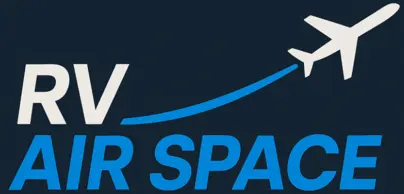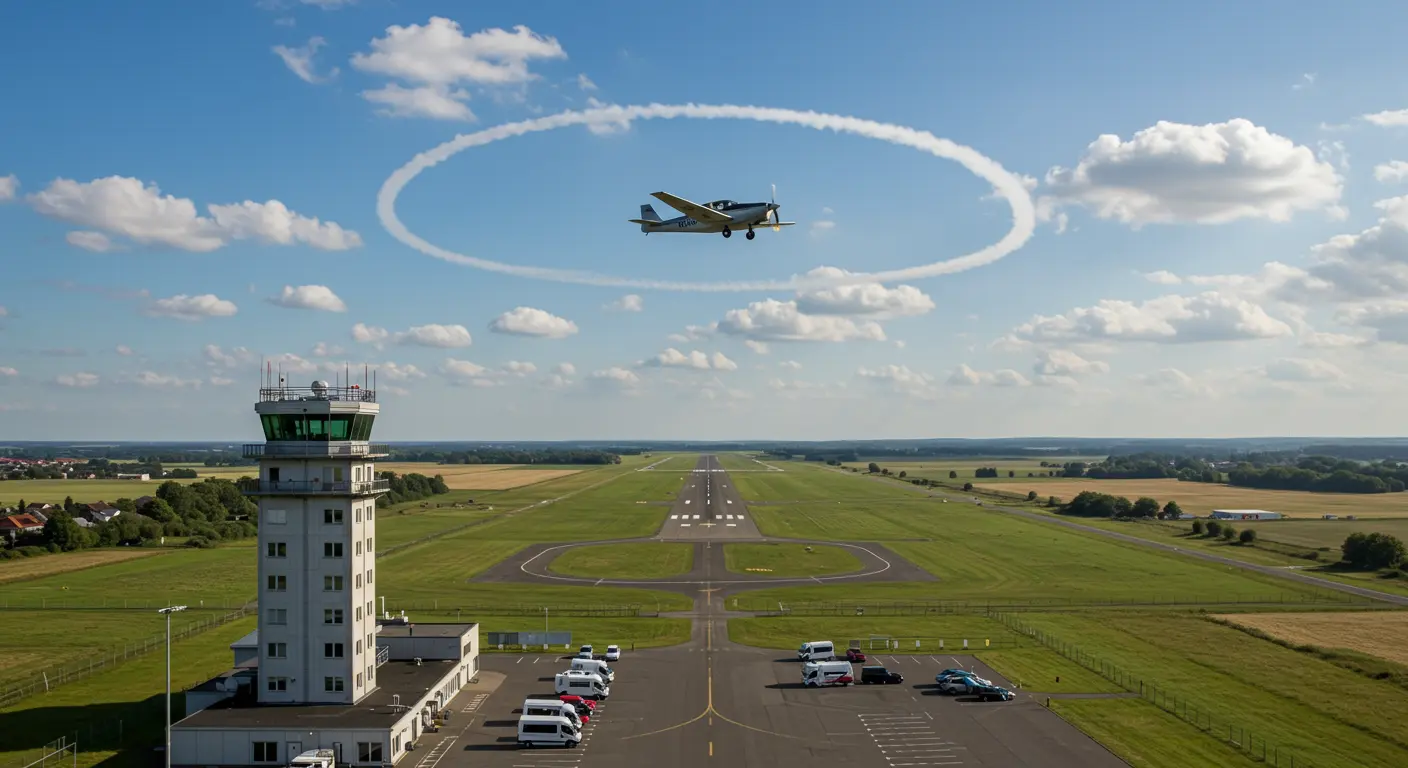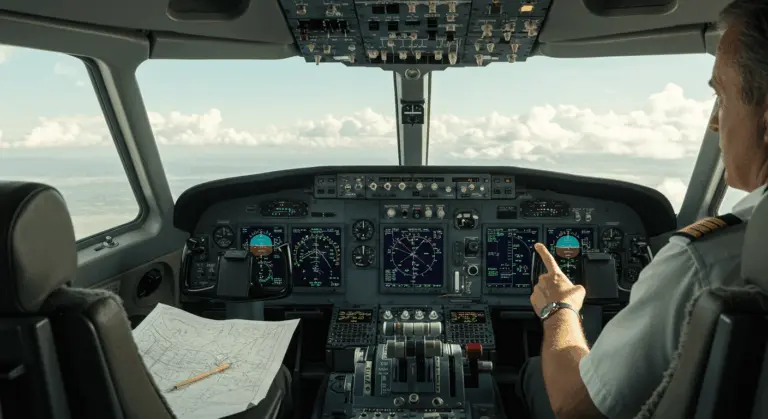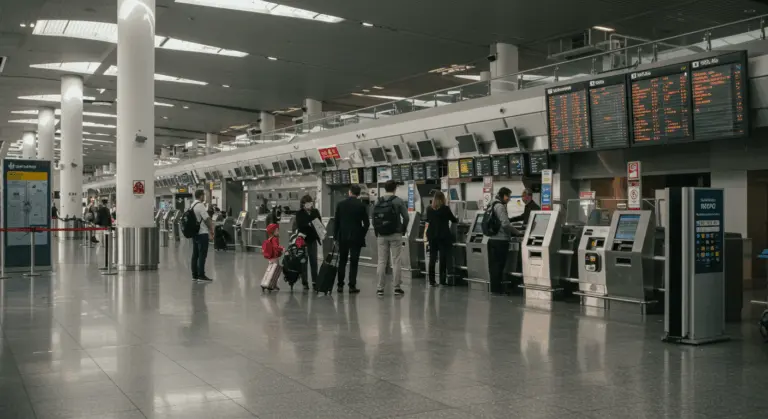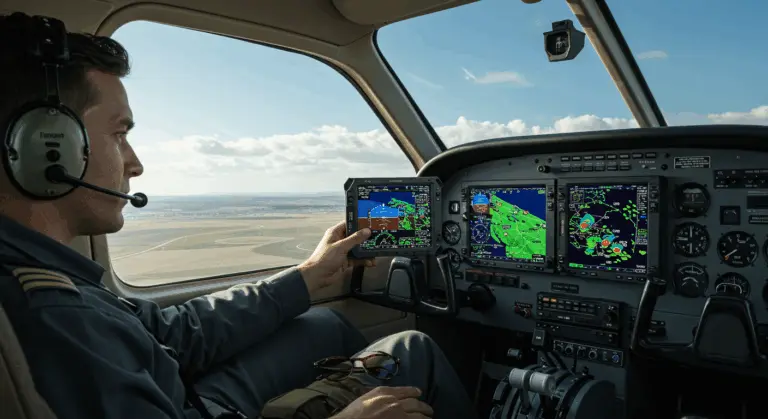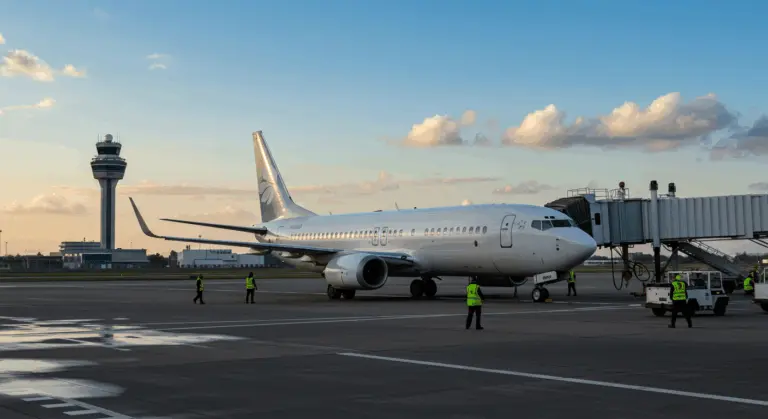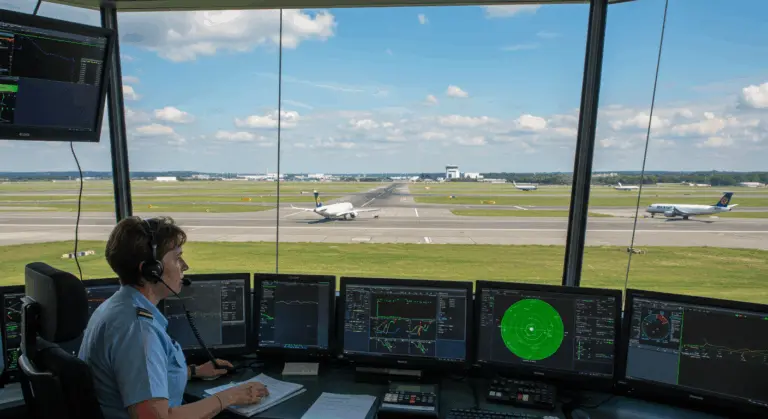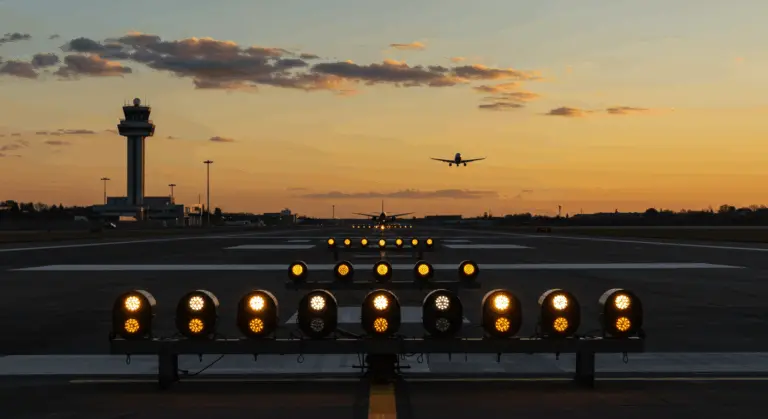Circling Approach: Understanding the Maneuver and Its Execution
What is a Circling Approach?
A circling approach represents a sophisticated landing maneuver where pilots visually align their aircraft with the runway following an instrument approach. This technique is necessary when direct runway alignment proves impractical—whether due to challenging terrain, complex runway configurations, or adverse weather conditions that prevent a conventional straight-in landing.
Unlike standard instrument approaches tied to specific runways, circling approaches work differently. Pilots execute an instrument procedure to reach the airport vicinity, then transition to visual flight rules for landing completion. This unique hybrid nature—marrying precision instrument work with dynamic visual maneuvering—makes circling approaches among aviation’s most demanding procedures.
This maneuver is challenging due to several factors:
-
Low Altitude: Performed close to the ground, reducing the margin for error.
-
Precise Handling: The maneuver requires exact control of the aircraft.
-
Situational Awareness: Pilots must maintain exceptional awareness of their position and surroundings.
-
Weather Conditions: It often occurs in marginal weather that meets the minimums for the procedure.
Due to its complexity and higher risk, circling approaches serve as secondary options to straight-in landings. They should only be attempted when operationally necessary—never as a matter of convenience.
How to Perform a Circling Approach
Executing a circling approach requires careful planning and precise aircraft handling. The sequence begins upon completing an instrument approach to the airport, where pilots must smoothly transition from instrument to visual flight rules while maneuvering for landing.
The process starts with flying the initial instrument approach to completion. Pilots maintain the published minimum descent altitude (MDA) until they establish visual contact with the runway environment. Once these crucial visual references are secured, the circling maneuver begins—but always within the safety boundaries of the designated circling area.
Careful planning is essential during the visual phase. Pilots must select the most efficient path to either the base or downwind leg of their target runway. This decision involves weighing multiple variables: wind direction, aircraft performance limitations, and potential terrain or obstacle threats. The goal is finding the shortest practical route that maintains safety margins.
During the final approach phase, pilots systematically configure their aircraft:
-
Set power for the correct approach speed.
-
Complete the landing checklist.
-
Establish the proper flap and gear configuration.
Continuous weather monitoring is essential throughout the maneuver. Visibility, ceiling, and wind conditions must remain above published minimums—any deterioration demands immediate action. Speed control proves equally critical, as excessive velocity can push the aircraft beyond protected airspace boundaries, reducing safety margins.
Circling Approach Procedures and Regulations
Federal regulations establish clear altitude requirements: pilots must remain at or above the circling Minimum Descent Altitude (MDA) until positioned for a normal landing descent. Premature descent creates a dangerous scenario, potentially placing the aircraft dangerously close to terrain or obstacles.
Standard operating procedures mandate left-hand turns for all circling maneuvers unless Air Traffic Control specifically instructs otherwise. This consistency maintains predictability within controlled airspace—a crucial safety factor when multiple aircraft operate in proximity.
Visual contact requirements remain absolute throughout the entire maneuver. Should pilots lose sight of the runway environment at any point, regulations demand immediate execution of the published missed approach procedure. No exceptions.
Clear ATC communication is essential for safe circling operations. Pilots must clearly understand of all clearances, particularly those involving non-standard instructions. Controllers may issue specific routing guidance or critical traffic advisories requiring immediate pilot response. When missed approaches become necessary, prompt ATC notification enables controllers to maintain proper aircraft separation.
The regulatory framework also defines protected airspace dimensions with mathematical precision. These boundaries expand based on aircraft approach category—faster, larger aircraft require more extensive maneuvering room. Understanding these limitations is mandatory. Exceeding protected area boundaries immediately removes obstacle clearance protection and significantly increases risk levels.
Safety Measures in Circling Approaches
Due to their inherent hazards, circling approaches demand rigorous safety protocols to ensure successful completion.
Obstacle clearance is fundamental to circling approach safety. Pilots must strictly follow designated circling areas—zones specifically engineered to provide terrain and obstacle protection. These protected boundaries scale with aircraft approach categories, allocating larger dimensions for faster aircraft requiring additional maneuvering space. Venturing beyond these limits immediately removes obstacle clearance protection and greatly increases risk exposure.
Maintaining exceptional situational awareness is essential. Pilots must continuously maintain a precise mental picture of their position relative to the airport, weather conditions, and surrounding traffic. Tunnel vision focused solely on landing can prove catastrophic.
Thorough pre-flight preparation improves safety margins. This involves studying approach plates in detail, thoroughly briefing the circling pattern and missed approach procedures, and establishing concrete criteria for alternate airport diversions.
Common Challenges and Solutions
Circling approaches present pilots with unique challenges that require specialized skills and proven strategies. Understanding these obstacles and their solutions is essential for safe execution of this demanding maneuver.
Low-altitude operations are the primary challenge—minimal altitude means virtually no margin for error. Pilots counter this threat by strictly maintaining MDA and maintaining stabilized approaches where airspeed, descent rate, and configuration are established early and held constant.
Weather variability creates another significant challenge, as conditions can deteriorate rapidly during the maneuver. Conservative decision-making helps address this: establishing personal minimums above published values and maintaining readiness to divert when conditions warrant.
Maintaining continuous visual runway contact is a critical challenge. When visual references disappear, the transition back to instrument flight can disorient even experienced pilots. Effective mitigation involves thorough missed approach briefings and maintaining instrument scan readiness throughout the visual phase.
Spatial disorientation is a major threat, particularly during night operations or reduced visibility conditions. Pilots combat this by trusting instruments over physical sensations, employing consistent bank angles, and using airport lighting systems for reliable orientation references.
ATC communication complexity increases in busy terminal environments where controllers juggle multiple aircraft simultaneously. Clear, concise radio work is essential. Pilots should declare their intentions early, seek clarification before approach initiation, and provide position reports during circling when workload permits. Mastering standard circling phraseology greatly improves ATC coordination.
Wind assessment creates additional complexity, as surface conditions often differ dramatically from those aloft. Pilots must secure current wind information and remain prepared to modify their circling pattern for unexpected gusts or challenging crosswind components.
Conclusion: Mastering the Circling Approach
The circling approach is one of aviation’s most demanding maneuvers—a sophisticated blend of instrument precision and visual flying artistry. It is an essential tool when conventional straight-in approaches prove impossible.
Successful execution requires several essential elements:
-
Procedural Knowledge: Thoroughly understanding the published minimums and protected airspace for the aircraft category.
-
Situational Awareness: Maintaining a clear picture of the aircraft’s position and being prepared to execute a missed approach immediately if visual contact is lost.
-
Altitude and Airspace Discipline: Strictly maintaining the MDA until a normal descent can be made and remaining within the prescribed circling radius.
-
Weather Evaluation: Accurately assessing conditions and compensating for wind to maintain a stable approach path.
Proficiency development requires consistent practice with qualified instructors and strategic simulator use to safely experience challenging scenarios without real-world consequences.
Mastery requires deep respect for the procedure’s complexity while maintaining strict procedural discipline. Remember: the safest maneuver is always one that aligns with both pilot proficiency and prevailing conditions.
